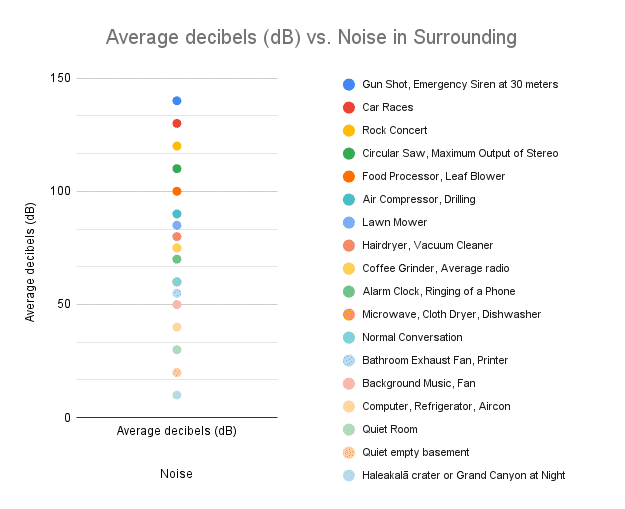Working from home has many benefits, such as avoiding distractions found in a traditional office. Even so, background noise at home is probably one of the biggest challenges you may face, which can make working from home difficult to focus on.
Background noise at home can be frustrating when trying to have a conversation. Often background noise can distract and interrupt video calls, or meetings with your team or clients.
While you are working from home let’s explore some ways you can easily do at home to reduce background noise and make your working experience more productive and free of noise distractions.

How to Reduce Background Noise when Working From Home
Working from home can be a great way to save time and avoid the commute, but it can also be difficult to focus when there is background noise. Whether it’s the sound of the TV in the next room or the constant drone of traffic outside, these distractions can make it hard to get work done.
Here are a few tips for reducing background noise when working from home.
1. Setup your home office in a dedicated space with a door
The best way to cope with working from home is to have a suitable and dedicated office space. If possible, turn a room into a home office where you can shut yourself away, close the door, and work quietly.
If you are wondering how to set up a professional home office for maximum productivity, here are some resources for you.
If you are working in a communal area of the house such as at the kitchen table, there will be more noise and distractions around.
Try to place your desk near a thick wall, a wall that is not shared with another room, or a window that is not overlooking a road.
2. Find a quiet area in your house
Try to set up your workspace or home office in the quietest part of your house away from all forms of distractions and noise-producing devices.
Here are a few areas to avoid when setting up your workplace at home.
- An ideal home office should be away from a window overlooking a busy road where there will be noises from the street,
- The workspace should be away from the noisier part of your house such as the kitchen where appliances such as the refrigerator may be whirring,
- Lastly, it should be away from areas such as the lounge where your family members will like to gather.
Remote working has become the new normal and there is an increasing trend of having more people working from home.
Thus, it is very likely that your partner is working from home too, and both of you should find a dedicated workspace that is away from each other so that you can take calls or meetings without disturbing each other.
3. Set boundaries
When you begin working from home the lines between work and home become blurred. You are constantly available in each space, thus you need to set clear boundaries with your family to let them know when you are working or have meetings and cannot be disturbed.
Healthy boundaries are important to allow you to concentrate when you are at work, so you can be physically and mentally focusing on your task.
Set boundaries and let your kids and partner know that even if you are physically at home, you are at work and will not be able to entertain any other disruptions not related to your work.
Setting boundaries can prevent any misunderstanding and improve the relationships with your household members.
4. Decorate your home office
Decorating your home office will not only make your workspace feels more lively but adding the right décor into your room can help reduce echoes and background noise.
A room that contains more furniture will not echo as much.
- You can use bookshelves or cabinets to reduce the amount of flat surface in the room which reduce the echo.
Furniture and décor that are made of fiber can help absorb sound which reduces the background noise in the room.
- Simply installing a curtain is one of the best ways to decorate your room while reducing the background noise.
- Other options such as laying down a thick carpet or a rug, hanging thick curtains, or placing upholstered furniture in your workspace can also muffle sounds.
5. Soundproofing
Soundproofing a room is probably the best way to reduce or even eliminate any background noise while you are working from home.
There are a few ways to soundproof a room.
- DIY. At home, you can take simple measures to fully or partially soundproof your house by adding sound-absorbing panels which reduce the vibrations of sound traveling into the room.
- Professional. Get professional help to design a room specifically to be soundproof, with extra materials built into the walls and ceiling. By absorbing or deflecting sound waves, these materials help to prevent noise from escaping the room and disturbing others.
Additionally, you can install door sweeps to fill any gaps between the door and floor to further reduce any sound coming from outside your room.
What is soundproofing?
Soundproofing is basically to add materials to the walls, ceiling, and floor that will absorb or deflect sound waves.
Materials that are sound-deadening materials like foam or rubber, and even curtains are some of the best materials to use to soundproof a room.
6. Headphones
If you are unable to soundproof your workspace then noise-canceling headphones are another great way to block out noises in the home. You can wear them just to block out sounds or can play pieces of music that cancel out the background sounds.
When you are on video calls your speakers can pick up background noise and reduce quality, but using a pair of headphones with a microphone can give you clearer audio and not pick up on those noises.
7. Turn on mute
If you are in a meeting or conference call and worried that everyone will be able to hear background noises in your home, just put yourself on mute until it is your turn to speak.
This is a simple quick way to ensure that your call is not interrupted by any noise coming from the environment.
Nonetheless, if you are the presenter, or the call requires you to speak a lot, this may not be as effective.
8. Play music, listent to podcast, or add white noise
Playing music, listening to podcasts, or adding white noise are probably some of the most unconventional ways to “reduce background noise”.
Noise that will cause you to feel distracted, or annoyed is the noise that you are not expecting and are sudden.
While it may seem odd to suggest adding more noise when you are trying to block out background noise. Many people who are working from home find that if you play relaxing music, a podcast, or white noise sounds, it can actually help you to concentrate more.
These sounds will act as a buffer to block out any annoying background noise such as traffic, a neighbor’s dog barking, or construction.
As these sounds are controlled and you are expecting them, they will be less distracting, also you can turn them off if you are having a meeting or call.
9. Change your schedule
Working from home means greater flexibility over your work schedule. If you’ve observed that there is some unwanted noise at a certain time of day, such as construction between specific hours.
You can schedule your work calls during a less disruptive time.
10. Work Somewhere Else
If you are unable to find a suitable spot at home to do your work, simply bring your work to somewhere you can concentrate and be effective.
Working from home means that all your work can be done remotely, and it doesn’t limit you to your house, your work can be done from almost anywhere as long as you have a Wi-Fi connection.
You can be at a beach, in a cafe, or even in a shared work area, you are all set to start your work.
Try to find a quiet spot in a café or the local library where you can get your work done better.
This can be a helpful option if your neighbor is having construction done and your home is unworkable for the next few weeks.
The Benefits of a Quiet Workspace
No matter what your job role is, it is extremely challenging to focus when there are distracting noises around. A quiet work environment has many benefits:
- Improves focus and productivity. It is easier to get into the work zone when nothing else is stealing your attention. If you hear noises in the house such as your children or pets you might get up and check what’s going on, which will take your focus away from your work.
- Allows clear work calls. Ensure that you are able to communicate properly with your counterparts and concentrate during calls and meetings, to prevent any miscommunications.
- Reduces stress. Constant background or loud noise can cause irritation and headaches. If you are unable to focus properly on your work and cannot complete tasks that you need to, this can lead to high-stress levels which can impact both your physical and mental health.
Common Background Noises When Working at Home
Background noise includes urban environmental noise such as the sound of the TV, a fan, aircon, refrigerators, motors, and even the sound of the rain.
When you’re at home, you may not always be aware of the background noises that are present as these background noises are generally below 40 decibels (dB) which is considered acceptable and will have minimal impact on working from home.
Here are some examples of noise decibel levels for the sounds you can find at home and outside of the home.
| Noise | Average decibels (dB) |
|---|---|
| Gun Shot, Emergency Siren at 30 meters | 140 |
| Car Races, Squeaky Toys | 130 |
| Rock Concert, Thunder | 120 (Sounds above 120dB can cause immediate hearing damage) |
| Circular Saw, Maximum Output of Stereo | 110 |
| Food Processor, Leaf Blower, Kids Screaming, Drilling | 100 |
| Air Compressor, Blender | 90 |
| Lawn Mower, Dog Barking, Busy Road | 85 (Sounds above 85dB can be harmful) |
| Hairdryer, Vacuum Cleaner | 80 |
| Coffee Grinder, Average radio | 75 |
| Alarm Clock, Phone Ring | 70 |
| Microwave, Cloth Dryer, Dishwasher | 65 |
| Normal Conversation | 60 |
| Bathroom Exhaust Fan, Printer | 55 |
| Background Music, Fan | 50 |
| Computer, Refrigerator, Aircon | 40 (Average home noise) |
| Quiet Room | 30 |
| Quiet empty basement | 20 |
| Haleakalā crater or Grand Canyon at Night | 10 |
However, there are other common background noises that can be very distracting such as children screaming (100dB), dog barking (85dB), car horning at busy traffic (85dB), and even people talking (60dB).
While these sounds may not always be bothersome, they can sometimes be annoying especially when you are on a call or concentrating on your work.
Thus, knowing how to reduce the noise at home can be beneficial if you are working remotely at home.
Reducing Background Noise When Working From Home Can Be Simple
Taking a few minutes to make some quick changes to your workspace can help create a better environment for you to concentrate on your work and be more productive.
There are many different ways to reduce background noise, so find what works best for you and make a change.
Not all background noise is bad, but when the background noise becomes too destructive, it is time for you to take some actions to improve your work environment.
Here are some other recommended reads that may interest you!
- Being motivated even when you are working from home.
- Staying productive while working from home.
- Ways to prevent burnout when working from home.
- How to relax yourself after work remotely at home?
Join over 11,000+ achievers who are committed to achieving their career goals!
Read Also:
- Number of PMP Certified Holders By Country in 2025 (Global Statistics 211 Countries)
- 12 Remote Work Statistics in 2025 (WFH is the Future)
- Jobs of The Future [2025 Job Future Outlook]
- 24 Surprising Business Strategy Statistics in 2025 (Business & Management Team)
- How Far is Too Far? Reasonable Commute Time and Distance to Work [2025]






